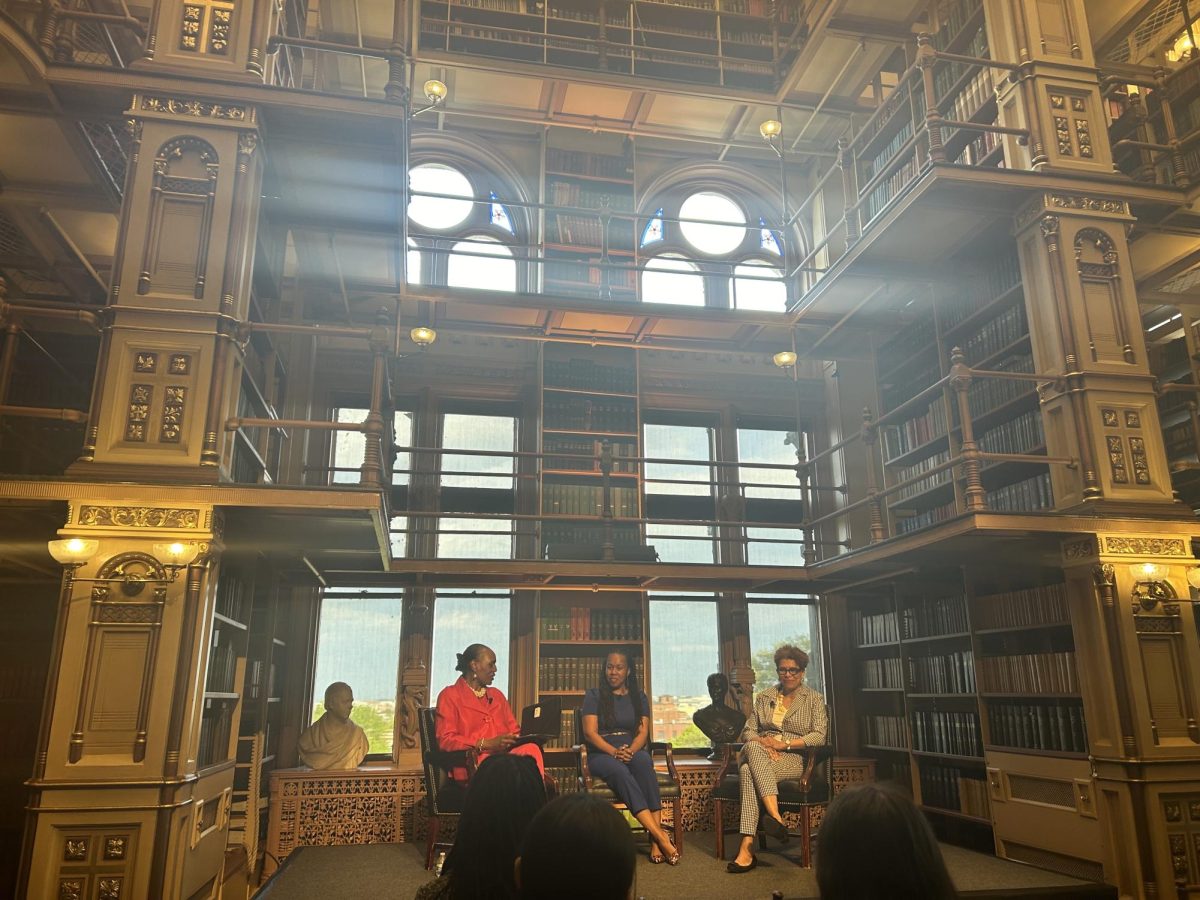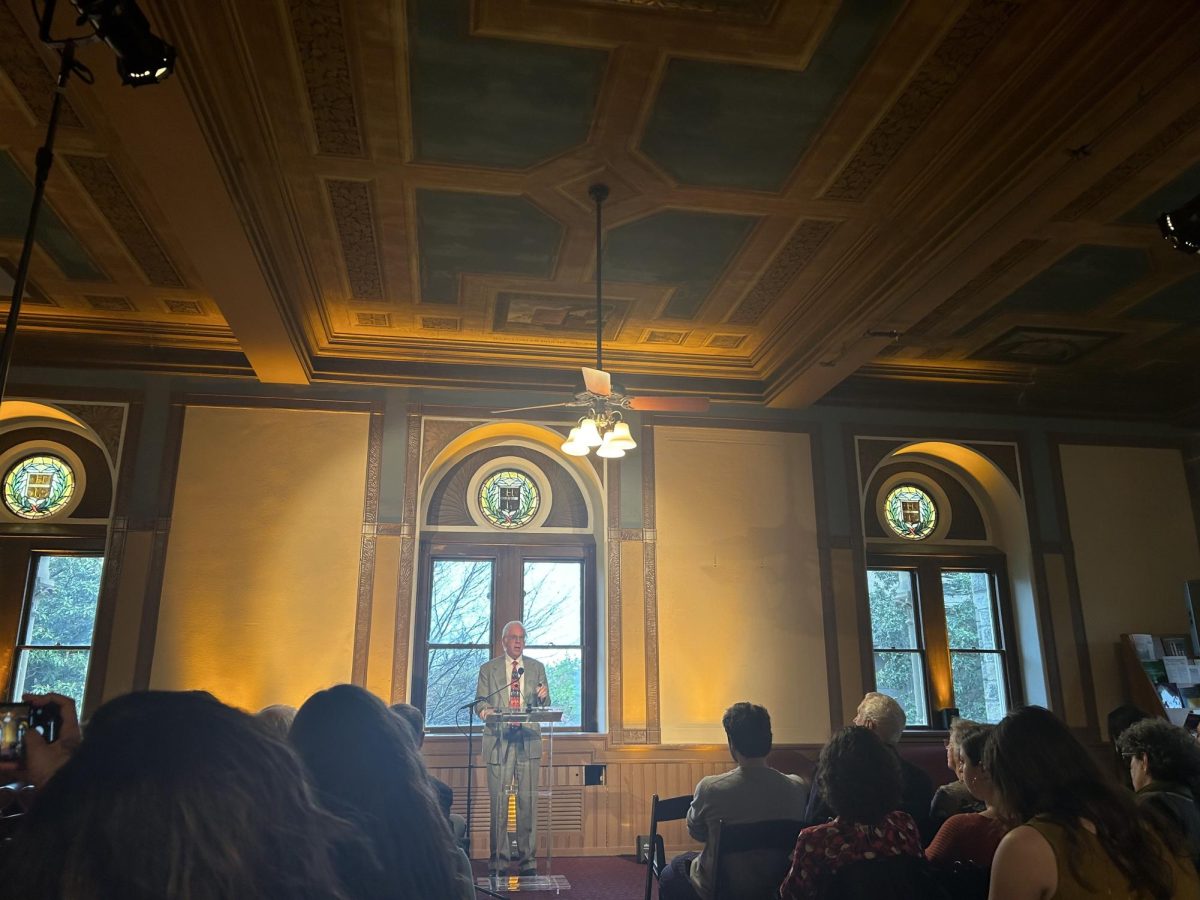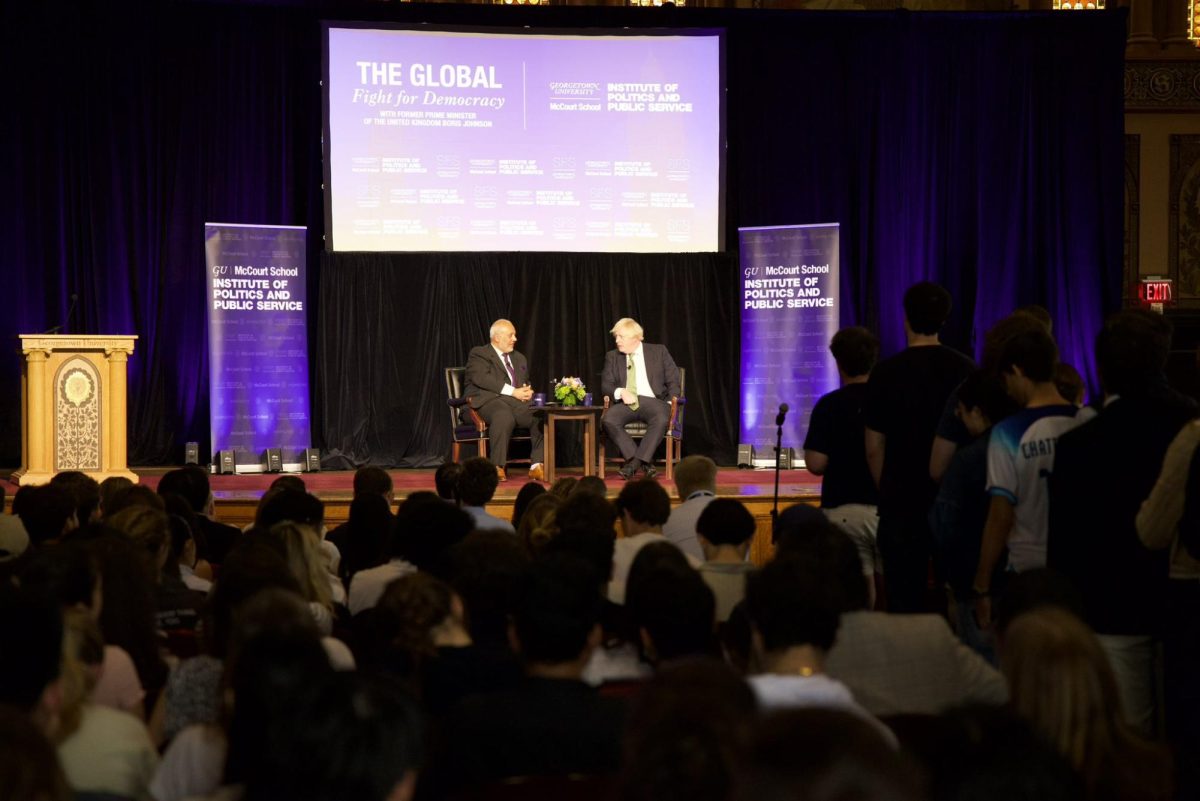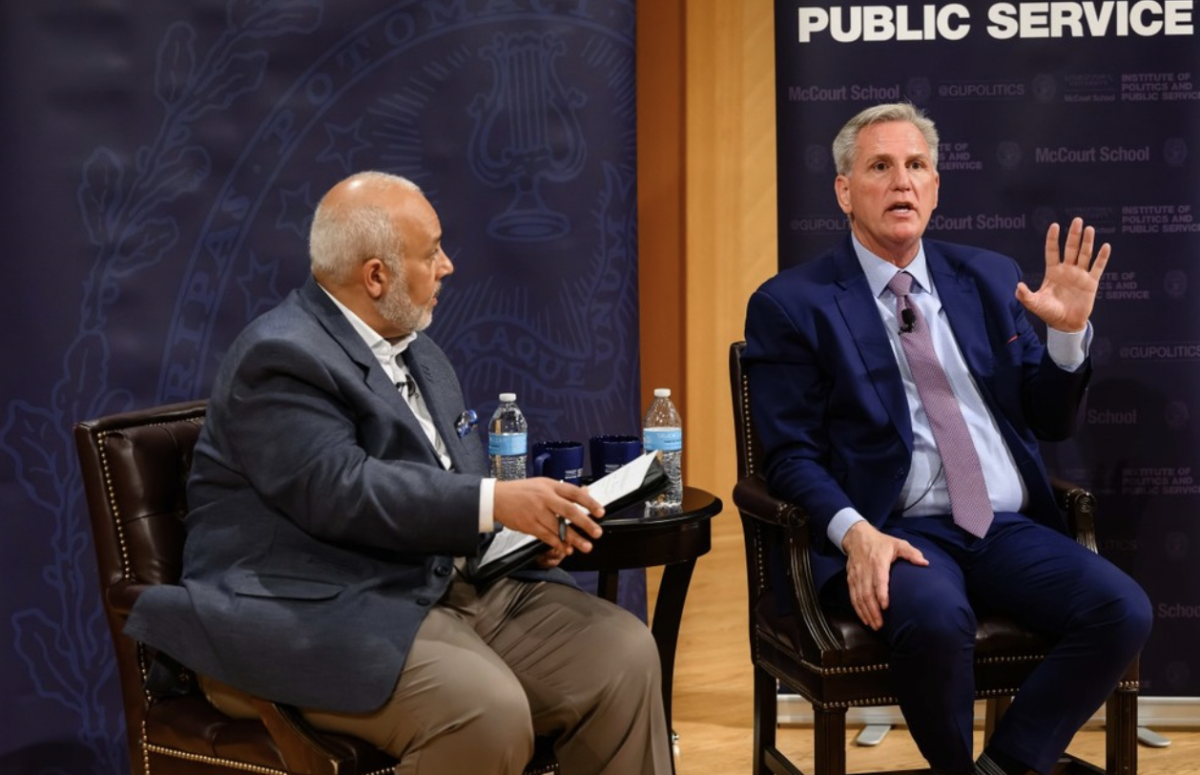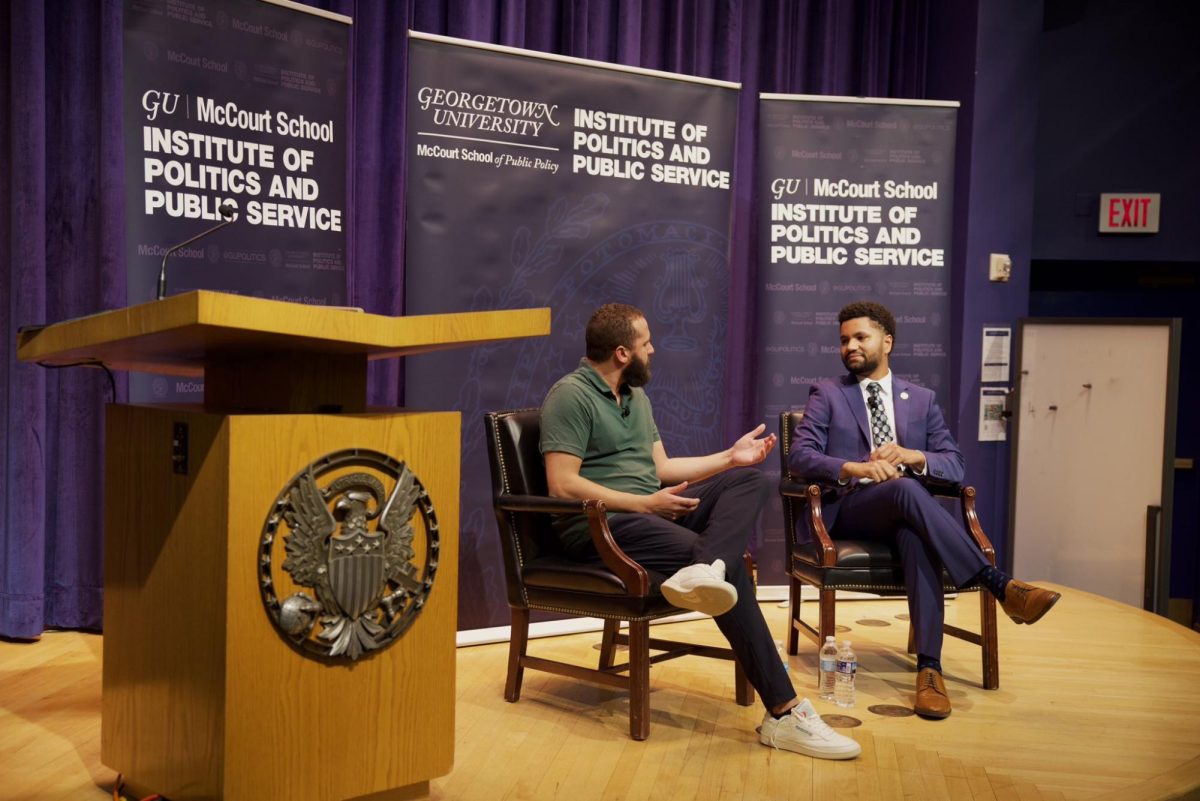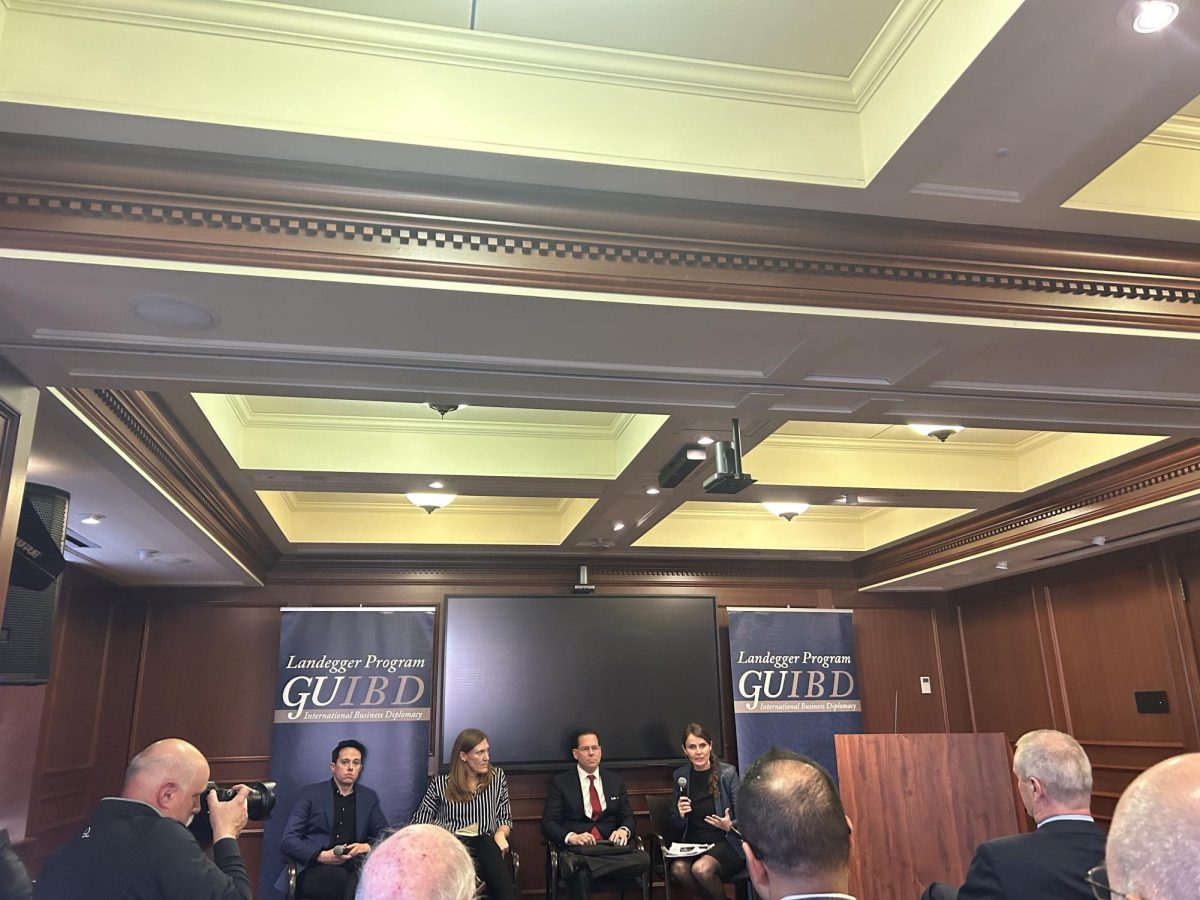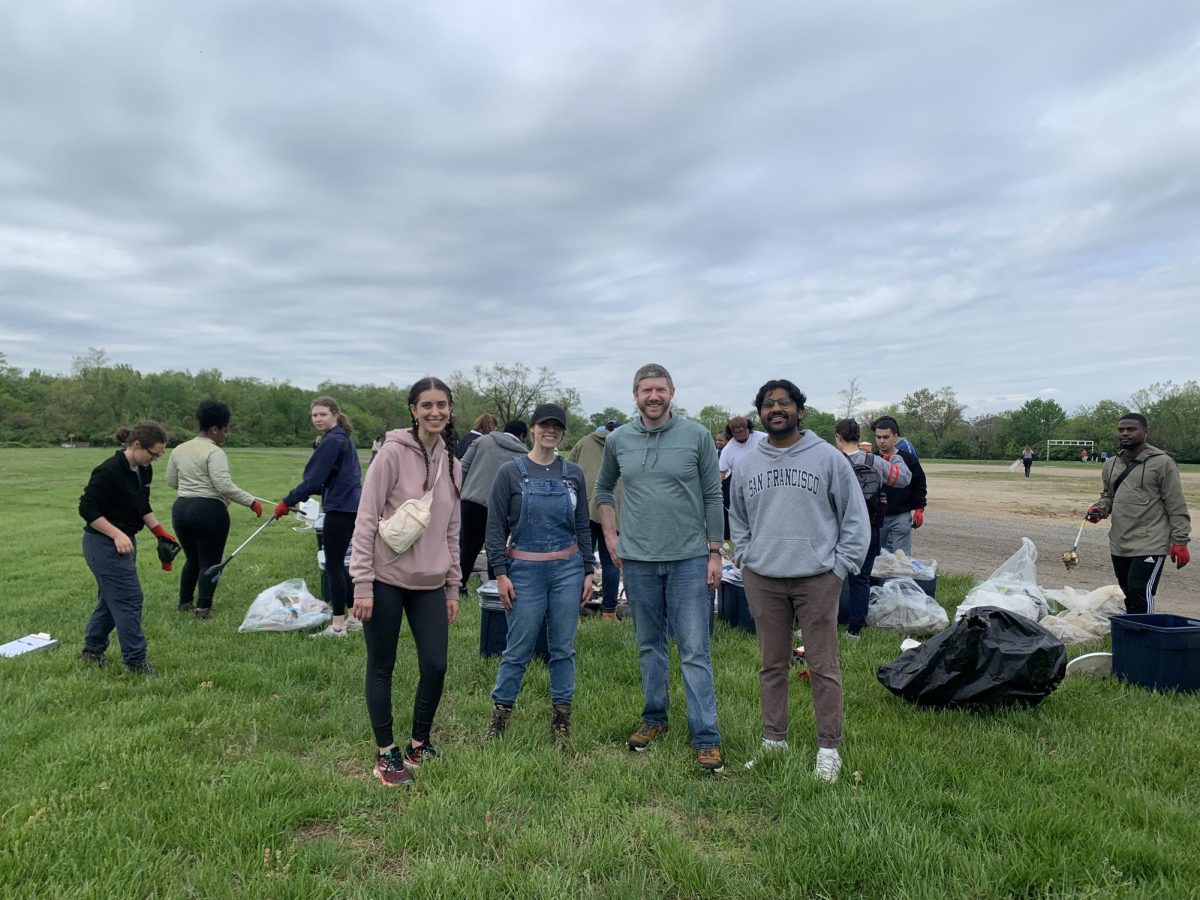A real estate investor assessed the future of commercial real estate in today’s fraught financial climate in an annual lecture delivered March 18 at Georgetown University McDonough School of Business (MSB).
The McBride Lecture, hosted each year by the Steers Center for Global Real Estate, which focuses on promoting to and educating students about the real estate industry, aims to provide opportunities for students to interact with prominent figures in the industry. Ron Kravit (GSB ’79), this year’s speaker, is a senior managing director at Cerberus Capital Management, an alternative investment firm with interests in private equity and real estate, as well as a senior adviser to multiple real estate companies.
Kravit began the discussion by sharing his experience in real estate during previous financial crises and comparing those to the situation today, saying the problem is arising from the demand side rather than the supply side.
“Most of them have come because of a supply issue,” Kravit said at the event. “I absolutely believe what we are seeing now is a demand issue, particularly on the office side, due to the way people want to work.”
The talk, titled “Is Commercial Real Estate in a Downturn or Crisis?”, focused on the looming uncertainty in the commercial real estate industry following a period of high-interest rates and the COVID-19 pandemic, with remote work rendering much of office real estate obsolete.
Kravit said the oversupply of commercial real estate was due to over a decade of low-interest rates.
“Low interest rates caused this. With no more low-interest rates, there’s not the supply of cheap debt facilitating the growth. That’s the difference here,” Kravit said.
Kravit said that given the oversupply of office space and the country’s affordable housing crisis, converting office buildings into apartments has recently emerged as an attractive investment opportunity.
He added that investors put off by a volatile market are considering getting into office conversion.
“There’s a lot of people looking at it, looking to convert them into multi-residentials, but office is just not me,” Kravit said.
While inexpensively renovating office buildings’ interiors is feasible, issues in residential conversion arise due to the lack of natural lighting in larger buildings and the expense of plumbing and electrical remodels.
Kravit said the blame lay squarely with political bureaucracy in response to a question about the major barriers to converting office space.
“Politics. That gets in the way. Everyone has their own agenda instead of trying to cut through the noise and fix the problems,” Kravit said.
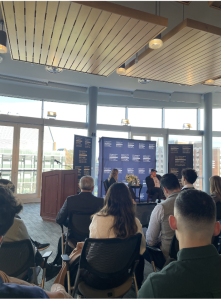
Kravit added that, from a real estate perspective, he thinks it is unlikely that there will be material improvements in affordable housing stock in the coming years.
While much of the discussion centered on the future uses of office building space, Kravit said that he is not interested in making investments in these buildings and instead prefers niche real estate opportunities.
“I hate the office business, I think it’s the dumbest business on the planet,” Kravit said. “There’s more asymmetric risk and more upside ultimately if you can figure out how to institutionalize some of these niches.”
Despite the potential consequences of a downturn in the commercial real estate market affecting other financial markets, similar to the role the housing market played in the Great Recession, Kravit said geopolitical risk is the number one concern plaguing investors today, specifically referencing supply chain disruptions.
“The biggest risk for real estate is geopolitical issues. It affects interest rates, it affects people’s minds on how they want to invest, it affects capital flows, all the basic elements of investing,” Kravit said.
Kravit also said he is confident the commercial real estate market will regain strength in the future, but that the market will experience a period of discomfort in the next couple of years.
“There are going to be some distressed opportunities to take advantage of, but I’m very positive over the long term. The short-term is going to be very ugly,” he said.
Such distressed opportunities, or an investment whose intrinsic value is depressed because of operational or financial distress, include buying commercial properties while prices are inordinately low and taking on non-performing loans, or loans that are unlikely to be repaid on time or at all, on real estate.
Kravit said there will be plenty of lucrative investment opportunities because of the real estate industry’s downturn.
“That’s my business for the past thirty years. Taking advantage of other peoples’ problems,” Kravit said.








